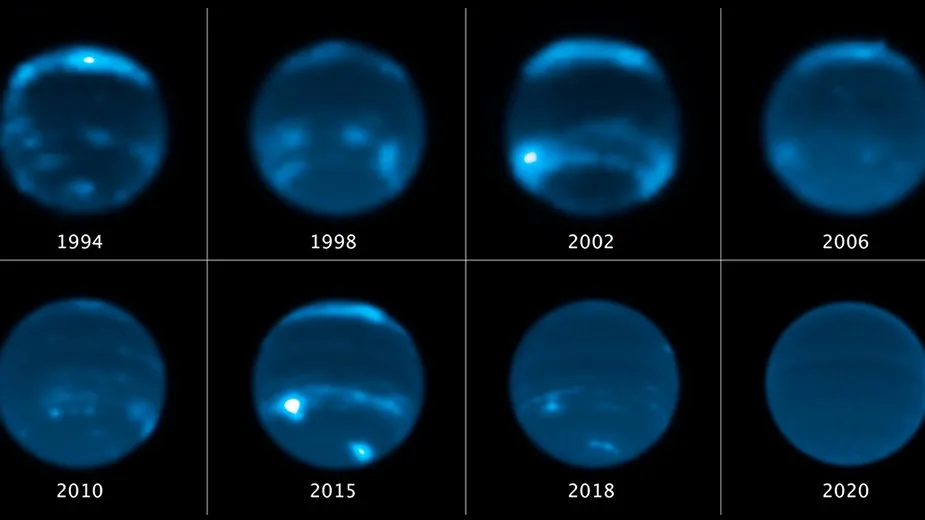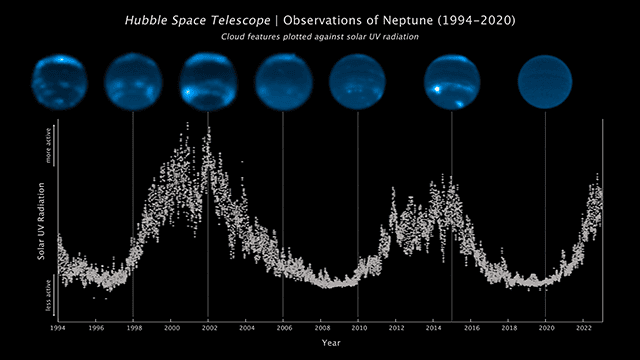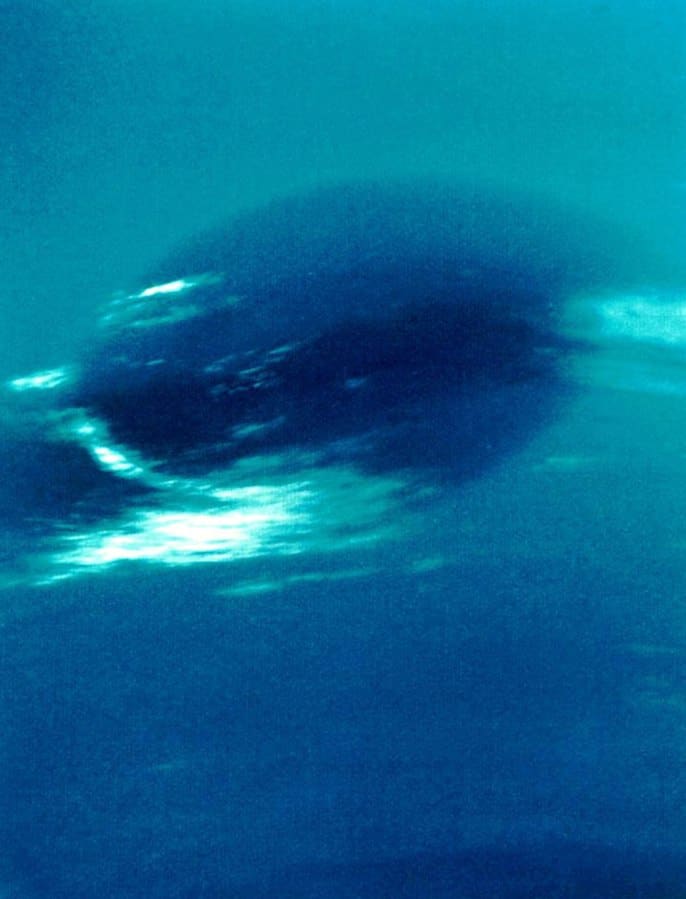
The clouds hovering above Neptune are performing an unexpected vanishing act. It’s the first time in more than three decades of observations that astronomers have witnessed such a thing.
In a span from 1994 to 2022, images of the iconic blue planet, captured from Maunakea on Hawaiʻi Island via the W. M. Keck Observatory and NASA’s Hubble Space Telescope, have shown a near disappearance of these atmospheric formations, save for those gathered around the planet’s south pole.
However, all of this may be very normal — part of a long cycle of cloud formation and disintegration linked to solar activity that is only now coming to light. Nevertheless, it’s a very surprising revelation that defies expectations given Neptune’s distance from the Sun and its minimal solar exposure.
Neptune’s clouds are synced with the Sun
The discovery was made by astronomers led by the University of California (UC) Berkeley as they observed a steady decline of cloud coverage typically observed at Neptune’s mid-latitudes, starting in 2019.
“I was caught off-guard by the rapid disappearance of clouds on Neptune,” shared Imke de Pater, emeritus professor of astronomy at UC Berkeley and the senior author of the study. “We witnessed a swift decline in cloud activity within a matter of months.”
Erandi Chavez, who headed the study during her undergraduate years at UC Berkeley and is now a graduate student at Harvard University’s Center for Astrophysics, added:
“Even four years later, the images we captured in June revealed that the clouds haven’t regained their previous presence. This is remarkably unexpected, especially when compared to Neptune’s previous periods of low cloud activity, which were not nearly as dramatic or prolonged.”
While monitoring Neptune’s evolving clouds, the astronomers thoroughly analyzed images taken between 1994 and 2022. What emerged from this data was an intriguing pattern linking Neptune’s shifting cloud cover to the solar cycle – the approximately 11-year cycle during which the Sun’s magnetic field flips, leading to variations in solar radiation.
When the Sun emits intense ultraviolet (UV) light at the peak of its cycle, specifically the robust hydrogen Lyman-alpha emission, clouds on Neptune appear in greater numbers about two years later. Furthermore, a connection was identified between cloud abundance and the planet’s brightness. This makes sense since clouds reflect light and thereby make objects brighter.
“These compelling data provide the most robust evidence so far that Neptune’s cloud cover correlates with the Sun’s cycle,” explained de Pater. “Our findings lend support to the idea that the Sun’s potent UV rays might be triggering a photochemical process responsible for producing Neptune’s clouds.”
This connection, traced through 2.5 cycles of cloud activity spanning nearly three decades of observation, showcases how Neptune’s reflectivity increased in 2002 (reaching a brightness maximum), then dimmed in 2007, brightened again in 2015, and plunged to its lowest recorded level in 2020, coinciding with the decline in cloud presence. The shifts in Neptune’s brightness seem to mirror the ebb and flow of cloud formation, driven by the Sun’s solar cycle.

Nonetheless, the sun’s influence isn’t alone in driving cloud coverage on Neptune. The increase in UV sunlight could foster more clouds and haze, yet concurrently darken them, reducing Neptune’s overall brightness. Storms from Neptune’s deep atmosphere — made up mostly of hydrogen and helium with just a little bit of methane — influence cloud cover as well, although these are unrelated to photochemically-induced clouds, potentially complicating solar cycle correlation studies.
Despite these uncertainties, one thing’s for sure: Neptune’s already frenetic atmosphere is a lot more complicated but also more fascinating than we thought.
Neptune’s methane-rich clouds are often whipped by supersonic winds – the swiftest recorded anywhere in our solar system. In fact, it’s these clouds of methane that explain Neptune’s blue marble appearance. Despite the fact it makes up a relatively tiny proportion of Neptune’s atmosphere, methane absorbs red wavelengths of light and reflects blue light back into space.

One of the most iconic images of this blue giant was snapped by NASA’s Voyager 2 during its 1989 flyby, revealing a colossal storm system named the “Great Dark Spot.” Since then, additional storms and dark spots, including a significant equatorial storm in 2017 and a large dark spot in northern latitudes in 2018, have come to light.
“It’s truly captivating to use Earth’s telescopes to study the climate of a world situated more than 2.5 billion miles away,” noted Carlos Alvarez, a staff astronomer at Keck Observatory and co-author of the study. “Technological advances and our Twilight Observing Program have enabled us to refine Neptune’s atmospheric models, which are critical for grasping the connection between the ice giant’s climate and the solar cycle.”
Scientists will continue to observe Neptune’s atmosphere for signs of cloud activity. In the last couple of years, some clouds have started to emerge coinciding with increased solar UV activity. In time, Neptune’s clouds will return to their former glory.
“Recent images show increased cloud presence, primarily in the northern latitudes and higher altitudes. This aligns with the observed rise in solar UV flux over the past two years,” explained de Pater.
The findings were reported in the journal Icarus.


